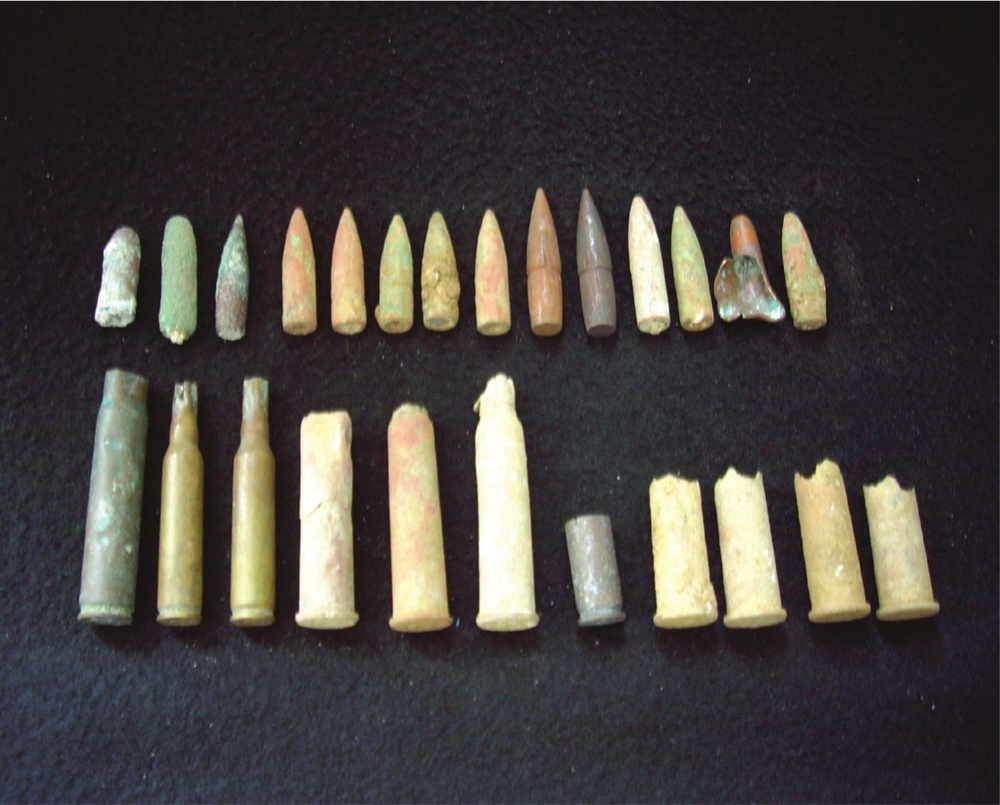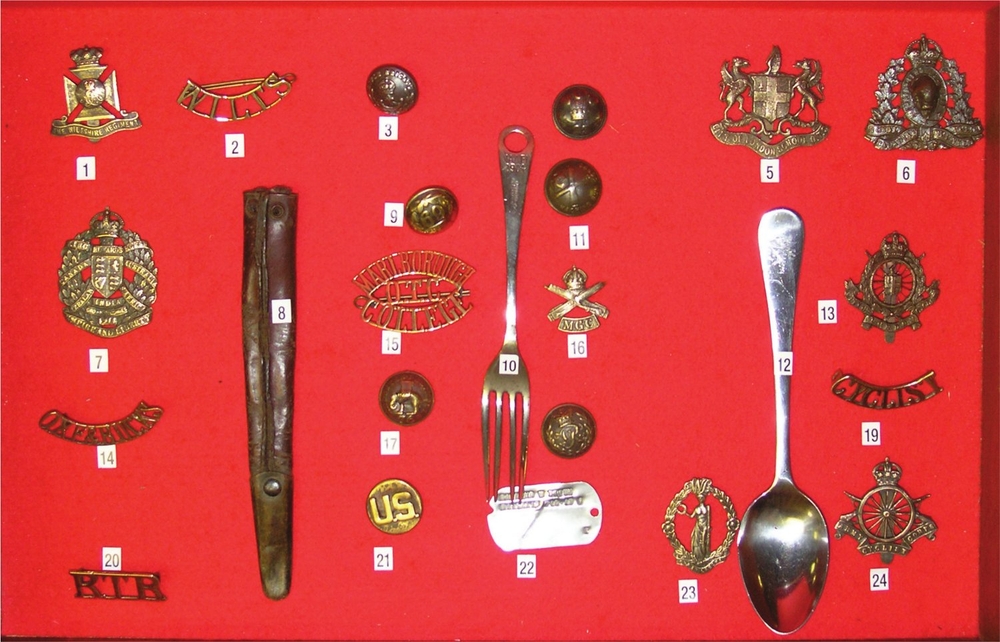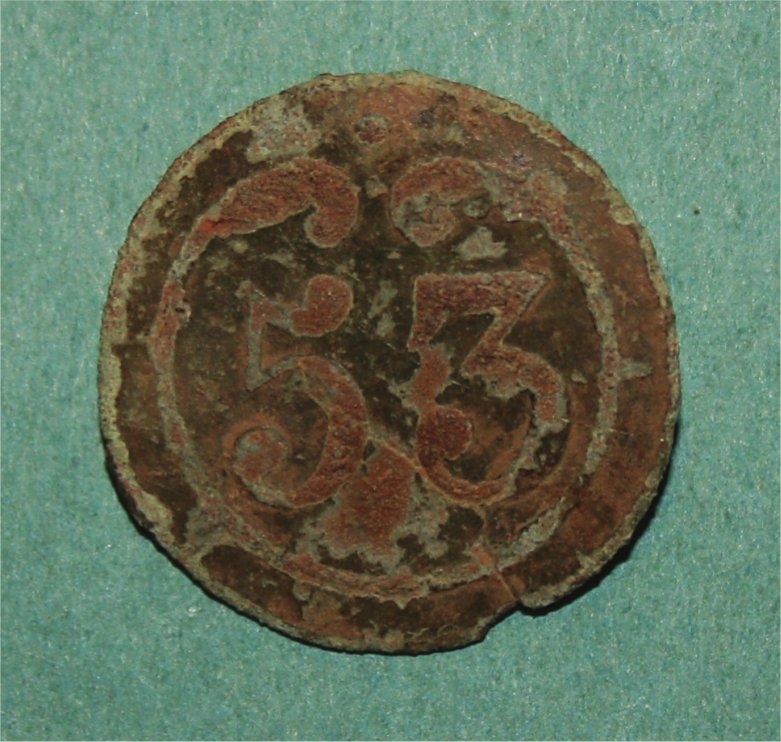Land detecting in many areas is restricted due to the type of crops grown by the farmers. If you live in an arable farming area you will have to consult closely with landowners to find out what time of year you will and will not be allowed onto the land. They are certainly not going to want you tramping over the fields when the peas, beans, corn or barley are maturing. We all need to be aware that these crops represent a huge cash investment by the farmer, who has more than enough problems to live with during the life cycle of the crop, including disease, wind, drought and floods.
An agricultural policy that has helped the detectorist has been the designation of ‘set-aside’ land that the farmer is paid not to farm; he is not even allowed to plough it. The European Union has recently proposed that the amount of set-aside land permitted on each farm will be reduced from 10 per cent down to 5 per cent. There will be fewer problems with access to pasture land if you live in an area where livestock farming is the norm. Unlike ploughed fields, pasture can be accessed most of the year. The only restrictions on the farm will be when the young animals are being born.
The discovery of any disease such as foot-and-mouth, bird flu or swine fever, however, can have a drastic effect on detecting opportunities on cattle and animal farms. If any of these diseases is declared in your area you must observe all the restrictions that are imposed. Do not be tempted to break these rules under any circumstances. Head for the beach and leave inland detecting alone for a while. Have sympathy for the farmers, as they may be going through a very difficult and stressful time. But you may find that you could earn yourself some brownie points for when things return to normal by offering to help around the farm, doing some disinfecting and clearing up.
Wherever you use your detector inland, the methods adopted will vary according to which of the two categories of search you are observing: opportunity detecting or targeted detecting.
OPPORTUNITY DETECTING
The first is opportunity detecting, in which the opportunity to detect on some land may arise purely by chance. This might come after a talk you have given or from a response to a newspaper article on your involvement in the hobby. It can also occur as a result of somebody seeing you detecting and inviting you to try your hand on their land or when your cold calling or telephone canvassing pays dividends.
Beggars cannot be choosers. Even if the land on offer does not appear to be too promising, give it a go. Before you start, try to do some research concerning the history of the land; you may find that it has been occupied for several thousand years and not just for the last few. Try to discover what the land has been used for and if there are any signs of old buildings. Examine the images of the area on Google Earth to see if there are any shadows on the landscape that might indicate previous occupation of the site, even going as far back as earthworks from prehistoric and proto-historic periods.

There are occasions when farmers may be happy for you to use your equipment on their land. Here the field has been ploughed and harrowed, but has not yet been seeded. The harrow marks in the soil make it easy to set up a gridiron search pattern.
When travelling about your area keep your eyes open for signs of where farmers are clearing their hedges and dredging the ditches. This kind of work provides the detectorist with an opportunity to detect the spoil from the sites and some very significant finds have come from freshly excavated earth.
In and around Wiltshire it is not unusual to find that farmland was used during both World Wars for the temporary billeting of troops in tented camps. Always ask the landowners and perhaps their older relatives if they have any knowledge of what used to go on in the area. It may turn out that horse or goose fairs were held on the land, or perhaps there were swimming sites along a river that crosses their land.
If you belong to a detecting club that has obtained permission to detect over a particular stretch of land, do not think that it will be cleaned out of finds just because the club has been going there for several years. As I have said before, most of the time we were only sampling the ground and significant finds have come from club sites that have been visited time and time again. So be optimistic and take heart from the discovery of a Roman hoard described in Chapter 16.

A small selection of spent munitions.
TARGETED DETECTING
The second type of inland detecting is on targeted land. This where detectorists have carried out their research into an event or site and eventually narrowed down their search to the actual piece of land they wish to detect on, which may be as small as a single dwelling. Perhaps the easiest way to show how this type of targeted detecting can be used is to look at some examples.
A few years ago a group of detectors in Wiltshire wanted to find the remains of a German Heinkel 111 twin-engine bomber that was reputed to have been shot down on the Wiltshire border, close to the town of Hungerford, during the night of 29/30 June 1940 following an air raid on the Great Western Railway Works in Swindon. (For further background information, see www.ramsburyatwar.com.)
The only planes in the area were reported to have climbed to the west after dropping their bombs, before taking the usual route of following the railway lines to Chippenham (the polished lines glint, even in the dark) and then turning south to the Dorset coast and on to their bases in Northern France. The records of aircraft sightings for that night, however, suggested that, although six planes had taken part in the raid on Swindon, only four enemy aircraft were reported as passing east of Chippenham following a southerly route. So two planes would appear to be ‘missing’.
More than a year later they had a breakthrough while detecting in the village of Lambourne, east of Swindon. There appeared to be a large number of spent bullets. Most were undamaged but some were deformed, showing they had hit something in anger. In conversation with an octogenarian farmer, it appeared that the undamaged bullets would have come from fighter pilots testing their machine guns after taking off from Membury airfield nearby. The damaged bullets, however, all came from a particular area where one of two large aircraft, flying in the wrong direction and sounding ‘different’, was shot down by anti-aircraft guns and fighters scrambled to protect the airfield. The wreckage was now buried deep in the hill, where the hole was filled in quickly so farming could continue.

An excellent display of military badges, many from the vicinity of Chiseldon Camp, Wiltshire, that represents hours of research, cleaning and setting out. (Collection and display by Kenneth James; photo by Brian Cavill)
1 Wilts Regiment cap badge, 1914
2 Wilts shoulder title, curved version 1902 on
3 Button, Rifle Brigade, World War II
4 Button, 23rd Regiment of Foot (Royal Welsh Fusiliers) 1855–c.1860
5 Cap badge, City of London School, OT Corps
6 Cap badge, Royal Canadian Mounted Police
7 Cap badge, 2nd King Edwards Horse, 1914
8 Stiletto or dagger sheath, believed American, World War II
9 69 Regiment of Foot, South Lincolnshire
10 NAAFI issue dining fork
11 Button, Machine Gun Corps, World War I
12 US issue dining spoon (Medical Corps)
13 Cap badge, City of London 1st Division Cycle Company (formed in 1916 and disbanded after three months)
14 Shoulder title Ox & Bucks, curved version work with separate bugle until 1954
15 Shoulder tab, World War I, Marlborough OTC College
16 Collar badge, Machine Gun Corps, World War I
17 Button, 76th Regiment of Foot, 1855–81
18 Button, general issue, Victorian period
19 Shoulder title, Army Cyclist Corps, World War I
20 Shoulder title, Royal Tank Regiment, 1939
21 Button, US Army, World War II
22 US serviceman’s identity tag, World War II
23 Cap badge, Women’s Legion 1915 (cooks, drivers, etc.; formed by Lady Londonderry)
24 Cap badge, Army Cyclist Corps, 1914
They had definitely found a plane, but was it the one they were looking for? Were these the two Heinkels that went missing between Swindon and Chippenham? Had they merely become disorientated after the raid and headed east instead of west? There remains a great deal of research to be done, but at least they now have a lead.
Targeted detecting requires extreme patience. You must be prepared to waste time down blind alleys before you finally reach your goal. It can easily take several years, but it feels good when all that detective work pays off and you reach a successful conclusion.
A fellow club member specializes in detecting for military artefacts. His approach is to research a site from the local historical records, mainly found via the library and on the Internet, and then to find out from Land Registry who has title to the land. He follows this by creating a folder showing the history of the site with photos, text and sometimes film or video footage. He then approaches the landowners and gives them a presentation of his findings. This is often the first time that they are aware of the historical events that have taken place on their land.
Many sites in North Wiltshire and West Berkshire have been occupied by the Army and RAF. Some were occupied for as little as four months prior to the D-Day landings in June 1944. From a detectorist’s point of view these sites are a rich source of artefacts, illustrated on page 91, that provide an insight into a unique period in our nation’s history.
INLAND DETECTING IN EUROPE
The same principles can be applied to finding land to detect on if you are interested in detecting abroad. It is of course more difficult to secure the necessary permission unless you can speak the language. I am fortunate in that I can speak French, German and Spanish well enough for my needs. If you do not speak the language, however, one way around the problem is to make contact with your local Twinning Association, who may be able to put you in touch with someone in the town with which they are twinned. You may even be lucky enough to find another detectorist. Those who join twinning associations do so to meet people from their twinned town and, in my experience, many of them speak English.
Before moving to a village near Mayenne in Normandy, Dave Ebbage was a very experienced detectorist and Site Officer of my club in North Wiltshire. His personal account opposite of the very different world of detecting in France provides a valuable guide to what you may expect across the English Channel.

METAL DETECTING IN FRANCE by Dave Ebbage
Whereas in the United Kingdom there may be as many as 30,000 detectorists and more than seventy clubs, in France the hobby is not as popular and is conducted on a more individual basis with only the largest towns having clubs. According to the website of the Fédération Nationale des Utilisateurs de Détecteurs de Métaux (FNUDM, www.prospection.net), there are about thirty-three associations (clubs) in France. Rallies are rare with perhaps two or three each year. These events are large, but considerable travel is needed and a two-hour lunch is essential to enjoy the full benefit of the rally! In the five years I have been living in France I have yet to see anyone detecting in the countryside.
I have been fortunate in obtaining permission from many farmers to detect on their lands – the first farmer I asked wanted to know how much I would charge him. The population density of the country is about half that of the United Kingdom. In the past people lived isolated existences in small towns and villages, rarely travelling more than a few kilometres from their birthplace. Even after a true national coinage was introduced, trade was often carried out using bartering. The Napoleonic inheritance laws, which made it mandatory for children to take priority over all other family members, including spouses, tended to reinforce this pattern and there is still a strong resistance to leaving one’s home town or village.

French magazines on metal detecting are rarely on sale in shops and are best obtained by post. (David Ebbage)
Many invaders have passed across the landscape – Goths, Visigoths, Romans, English, Spanish and Germans, to name but a few – and one would expect to find an interesting mix of coins and artefacts. But this has not been the case in my experience. I live in Département 53, the Mayenne and a part of the Pays de la Loire, where farming is a major industry and there are many hectares of land available for searching around the village. There seems to be little involvement by archaeologists or indeed interest in the curtailment of detecting, although further north there may be restrictions in searching due to the numerous military sites and the possibility of uncovering wartime explosives. While it is difficult to give an objective comparison of the find rate in France compared with Wiltshire, in terms of the quantity of non-ferrous items located my figures in France might be less than one-tenth of my UK finds. The number of coins, in particular, especially those minted before the Revolution, is low and to date I have not found a single silver coin. My oldest find in France has been the broken blade of a late Bronze Age axe, but most finds relate to the period after the Revolution. The most common coins come from the period of Napoleon III (reg 1852–70), the 50 centimes piece being the size of the old British halfpenny. Some unusual finds, unique to France, are the pre-war bicycle road tax tags.

Unusual French bicycle road tax discs. (David Ebbage)
French law regarding metal detecting is less formal than in the United Kingdom, although such is the legal system in France that a Napoleonic law can be found to deal with any situation! These are my own views, but in general there appear to be no problems with detecting on land without archaeological or historic backgrounds provided permission has been obtained from the landowner. To be more pedantic, because of the way land is frequently subdivided and often rented out, it may be difficult to locate the true owner of the land. All the farmers I have dealt with, however, have been helpful as well as very interested in our hobby. With regard to finds, the situation is similar for those classified as covered by the Treasure Act in the UK. In practice, it might only be necessary to record hoards with the local authorities. My own feelings are that smaller finds would be retained by the local administrations and never seen again – not due to theft, but to the incredible amount of bureaucracy found in France. My philosophy is to be honest and open-handed. Show all the finds to the landowner and, if necessary, the Mayor. So far this has proved most rewarding. I have had some contact with local archaeologists, mainly with regard to identifying finds, and they have been very helpful. In this respect I have also been involved in the renovation of a local château and was allowed by the Project Manager, who is not an archaeologist, to search the spoil heap and found a small coin weight. In the future I hope to extend my work on local archaeological digs.

French 2 franc coin (left) with the postwar (1945) declaration of Liberty, Equality and Fraternity, compared (right) with the exhortation under German occupation (1943) of Work, Family and Fatherland. (David Ebbage)
Supporting the metal detectorists in France are dealers who offer a wide range of detecting products, including many also on sale in Britain. The Frenchmade XP range is available widely and seems to be extending its customer base to the UK (www.xpmetaldetectors.com). A Spanish detector that is available is known as the Deepers MF owing to its relatively low frequency of operation (it can be adjusted to 400 different frequencies ranging from 550Hz to 950 Hz; see www.deepers.com).

French postman’s button for Département 53 (Mayenne). (David Ebbage)
Detecting in France has not reached the level of interest or activity that it has attained in the United Kingdom, but there is potential for strong growth that could be well supported. Should you wish to detect in France, comply with my comments regarding obtaining permission and avoid archaeological or historic sites. The French equivalent of Google Earth, known as Géoportail (www.geoportail.fr), should help your research. You will find that the coverage of France is at a much higher resolution than Google Earth can offer, so giving you a head start in your detecting.
